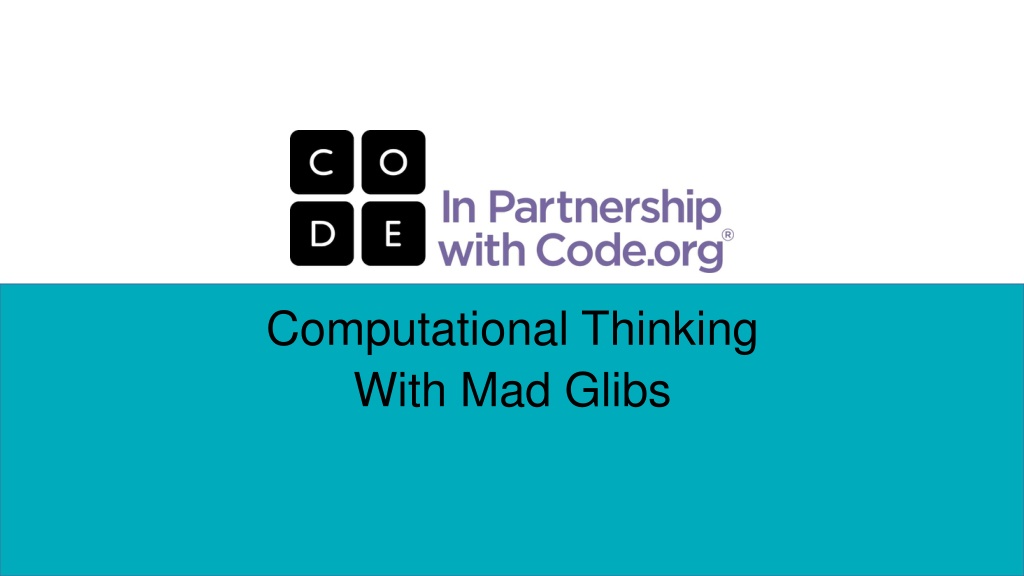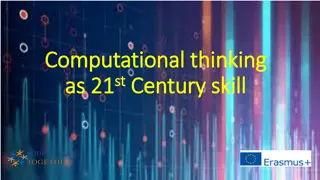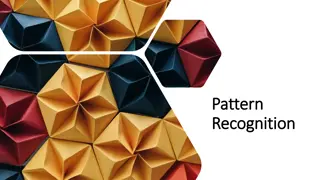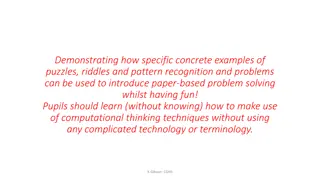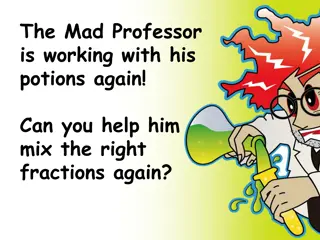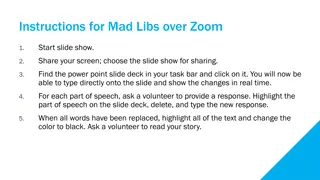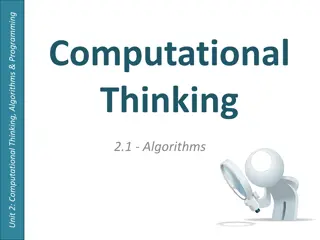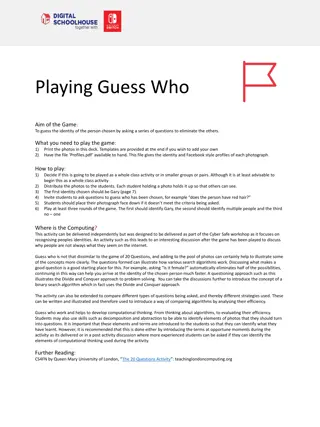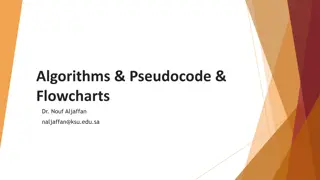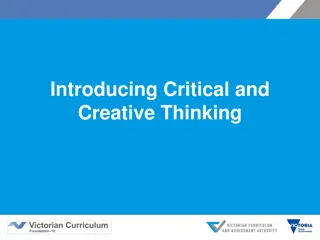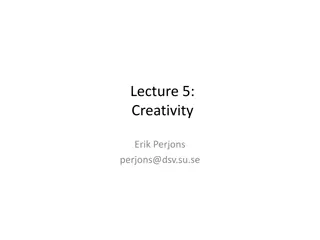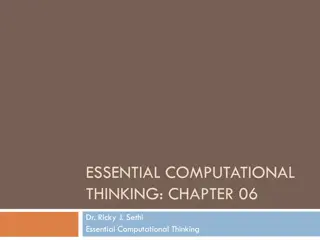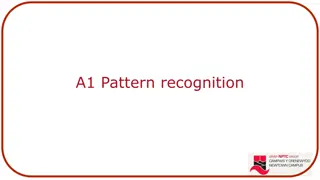Computational Thinking with Mad Libs
In this computational thinking activity, participants engage in an unplugged exercise where they sum numbers from 1 to 200 mentally. They then explore patterns, decomposition of problems, and special algorithms. The activity progressively challenges the participants' problem-solving skills and helps them understand fundamental computational concepts.
Download Presentation

Please find below an Image/Link to download the presentation.
The content on the website is provided AS IS for your information and personal use only. It may not be sold, licensed, or shared on other websites without obtaining consent from the author.If you encounter any issues during the download, it is possible that the publisher has removed the file from their server.
You are allowed to download the files provided on this website for personal or commercial use, subject to the condition that they are used lawfully. All files are the property of their respective owners.
The content on the website is provided AS IS for your information and personal use only. It may not be sold, licensed, or shared on other websites without obtaining consent from the author.
E N D
Presentation Transcript
Computational Thinking With Mad Glibs
Unplugged Activity Warm up! I want you to sum up all of the numbers from 1 to 200. In your head In 30 Seconds. GO!
Unplugged Activity Warm up! Did anyone think this was so hard they didn t even try? Did anyone attempt it but not finish? Did anyone get an answer? What DID you try?
Unplugged Activity Warm up! If we break the problem up into smaller pieces (decompose the problem), it becomes easier to manage. What is 200 + 1 What is 199 + 2 What is 198 + 3 See a pattern? What is our last pattern? 101 + 100 How many of these patterns are there? 100
Unplugged Activity Warm up! So adding up 1 to 200 is just (1+200)*100 = 20100 Now that you know the pattern, could you add up all of the numbers from 1 to 2000? How about 1 to 20,000? What stays the same in each of these new summations? What is different?
Unplugged Activity Warm up! What we have been doing is working with a special kind of algorithm. (What was the definition of an algorithm again?)
Unplugged Activity Warm up! What we have been doing is working with a special kind of algorithm. (What was the definition of an algorithm again?) Abstraction Pulling out specific differences to make one solution (algorithm) work for multiple problems. If we assume that we are going to pass in a stopping value, let s call it number what is the algorithm for this problem?
Unplugged Activity Warm up! To sum up all of the numbers from 1 to NUMBER: Find (1+NUMBER) Multiply this by (NUMBER/2) The resulting product is the sum of the set of numbers! Does this work? Test it for 200, 20, even 2. Does it work for odd numbers such as 5?
Applying this Idea to Mad Glibs In your notes or on some scratch paper Number the first six lines Line 1 Ingredient (eg. Corn) Line 2 Ingredient Line 3 Liquid Ingredient (eg. Coconut Milk) Line 4 Ingredient Line 5 Ingredient Line 6 Finished recipe (eg. Enchilada)
Share your recipe with your table. Line 1 Line 2 Line 3 Line 4 Line 2 Line 5 Line 6
Applying this idea to Mad Glibs I remember this awesome Mad Glib we used to play, but I can t find the original story. But what I DO have is two copies of finished stories. Using pattern matching and abstraction like we did in our warm up, I want you to figure out the original story template.
Applying this idea to Mad Glibs Suggestions Pattern match between each story by circling the sections of words that are identical from story to story Abstract away the differences from each story by underlining words that change from story to story Make a story template by writing up the circled parts and leaving the underlined sections as blanks Examine the blanks and the game sheets to figure out how to fill in the blanks as the story is written.
Wrap Up What should you try to do when you re asked to do something and you don t know how? If a problem is too hard, what should you try to do? If you find similarities in lots of solutions to different problems, what does that probably tell you? If you have a problem that is just a little different from a problem that you have a solution for, what would you do?
Debrief What do you like about the lesson itself? Where might your students struggle with this? What might you try differently? What additional activities could you do?
